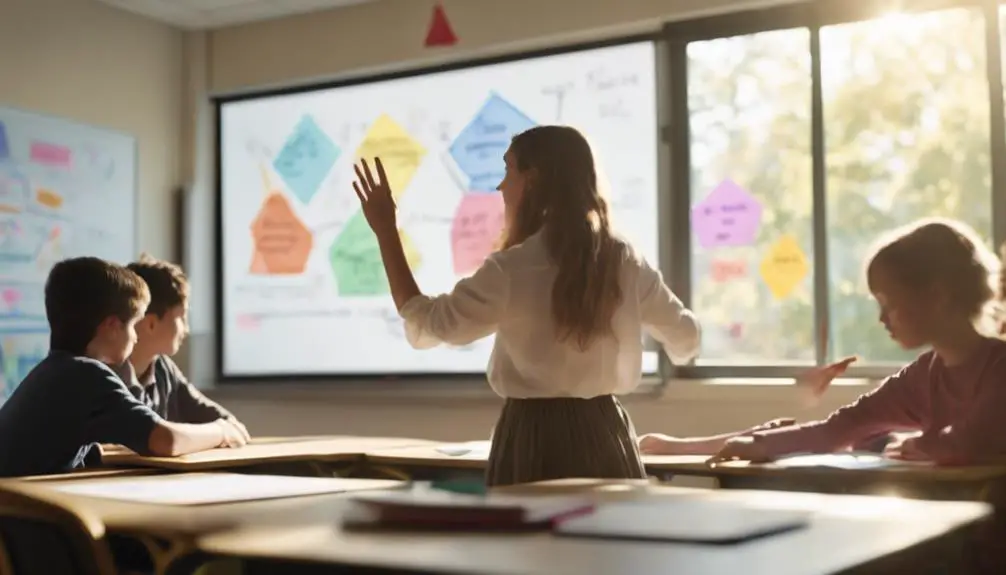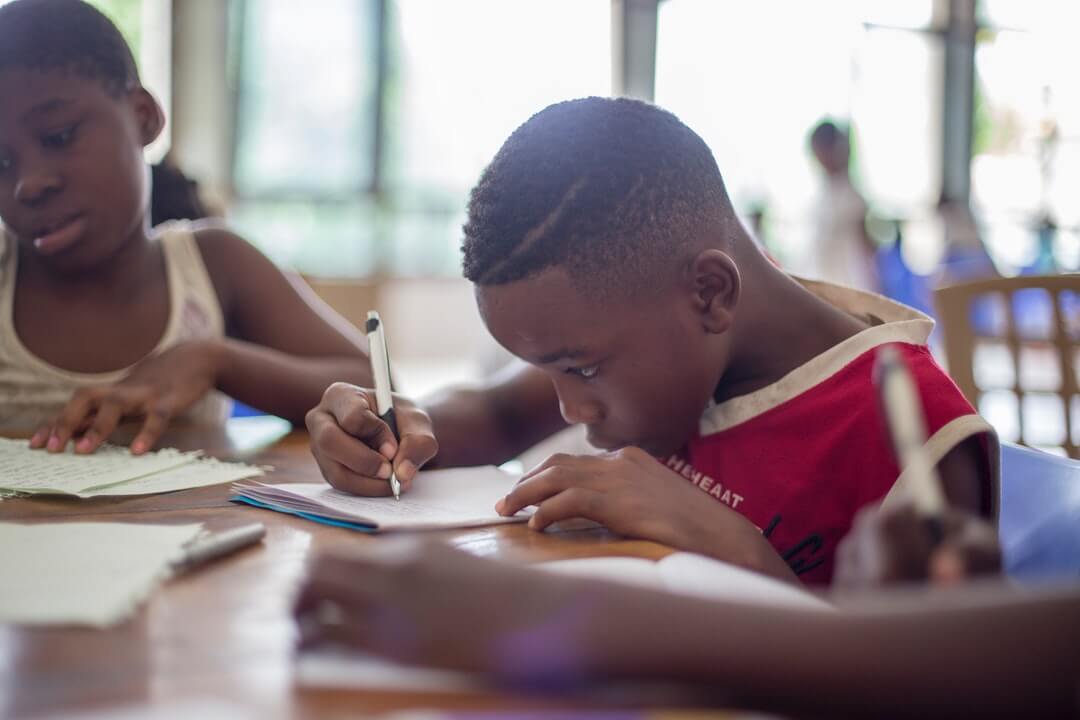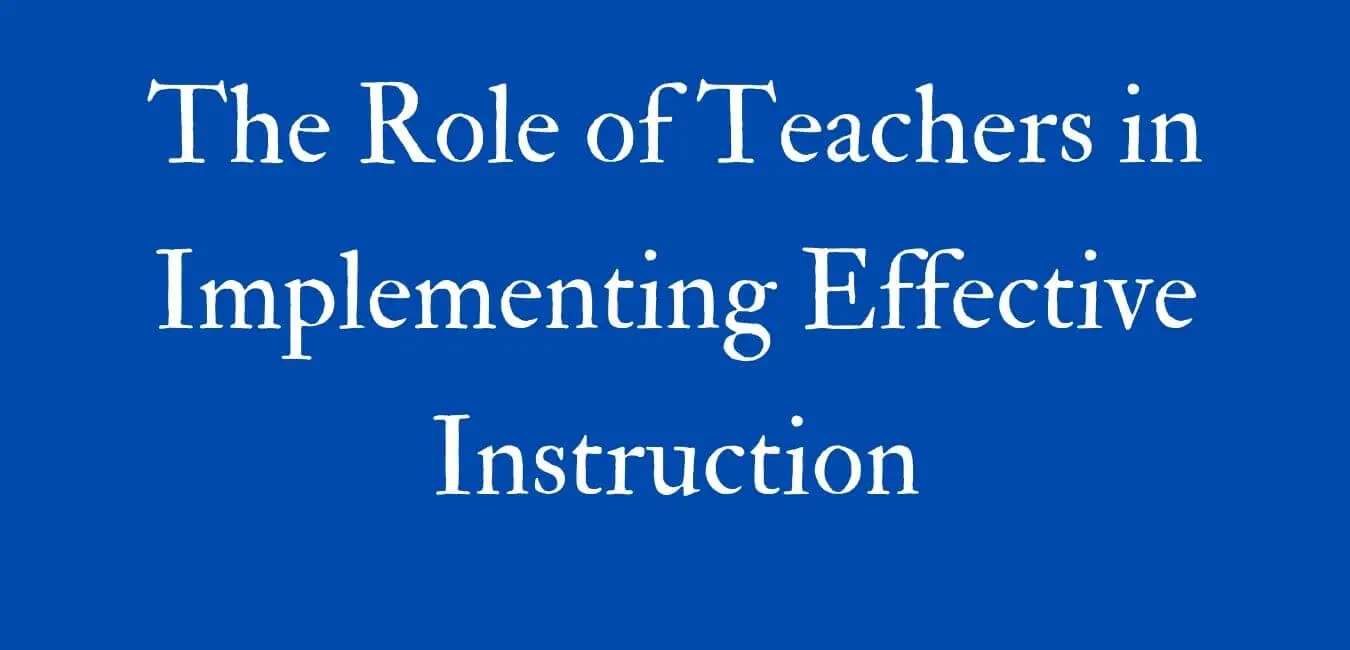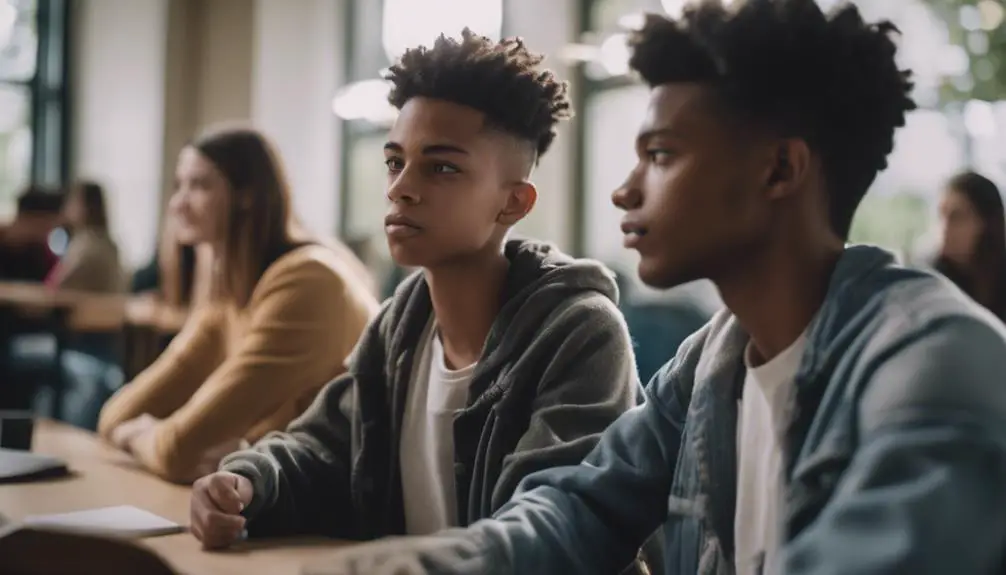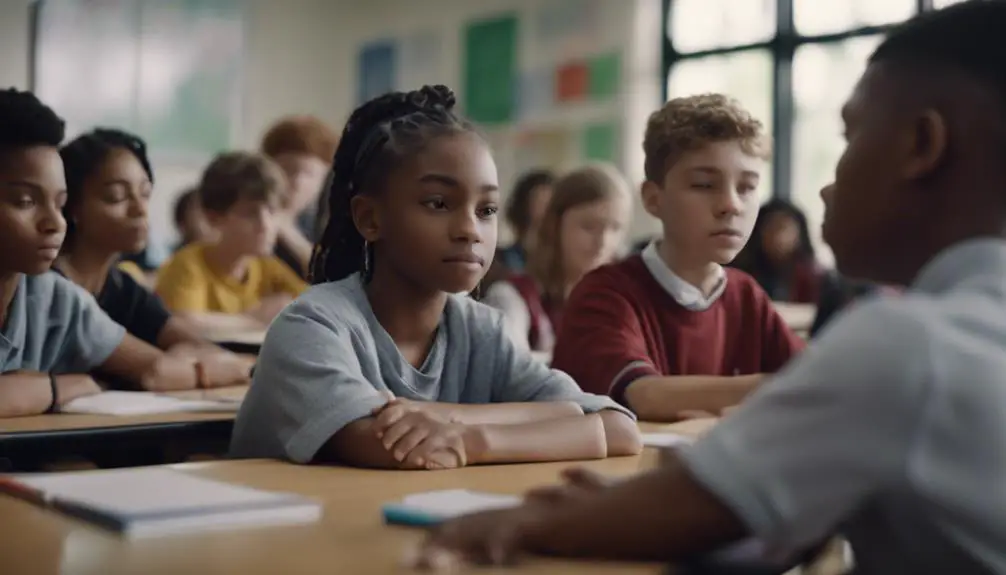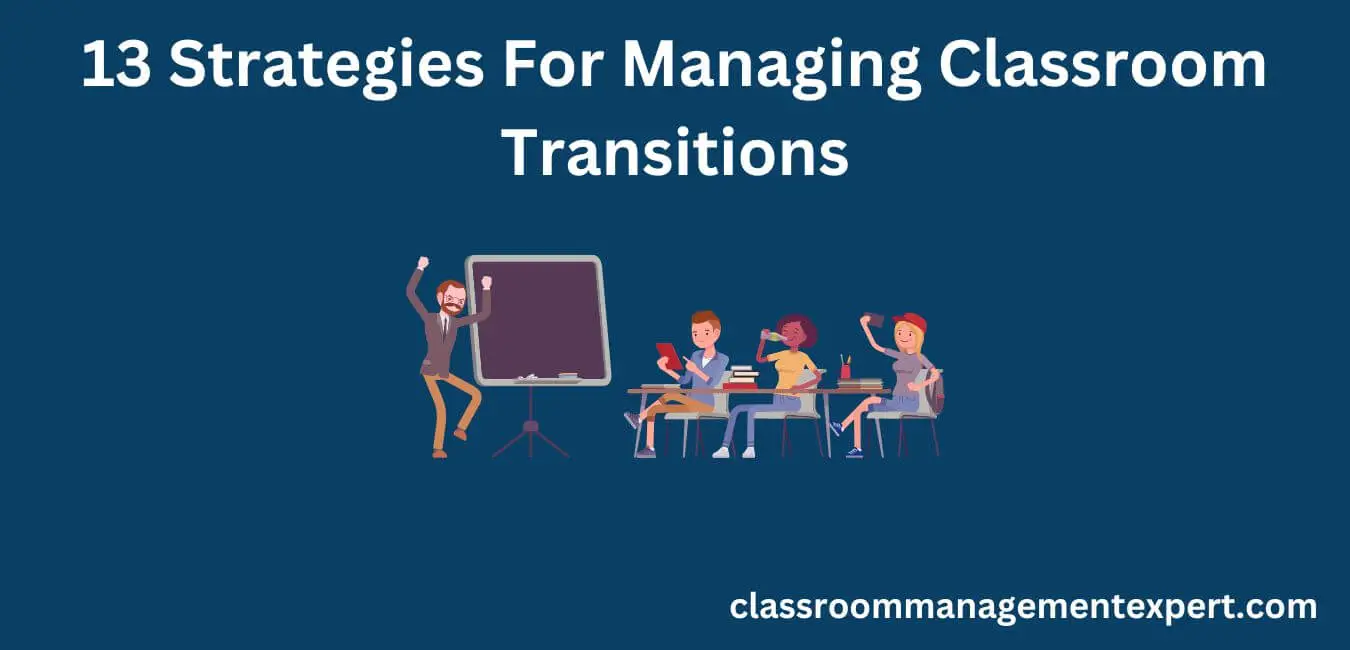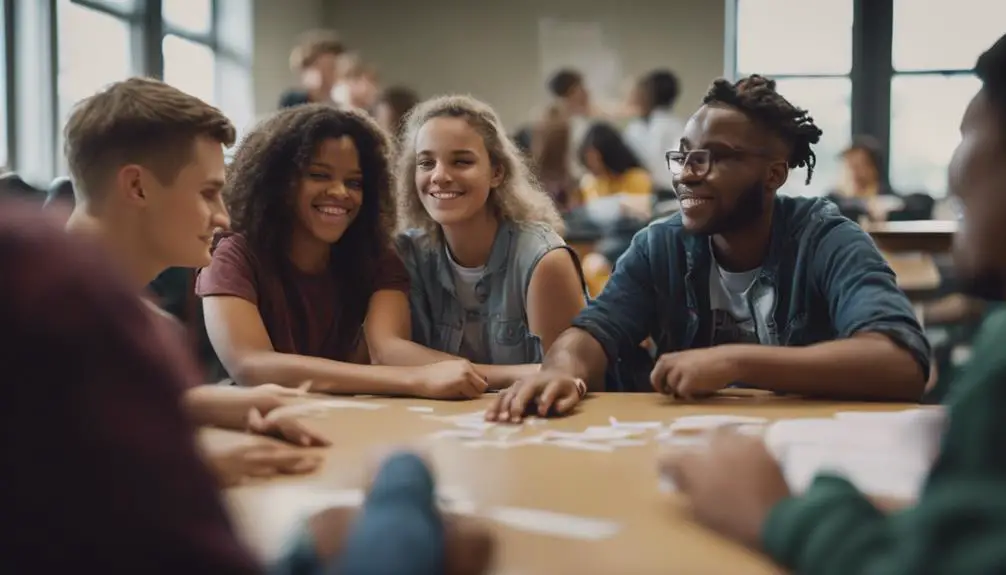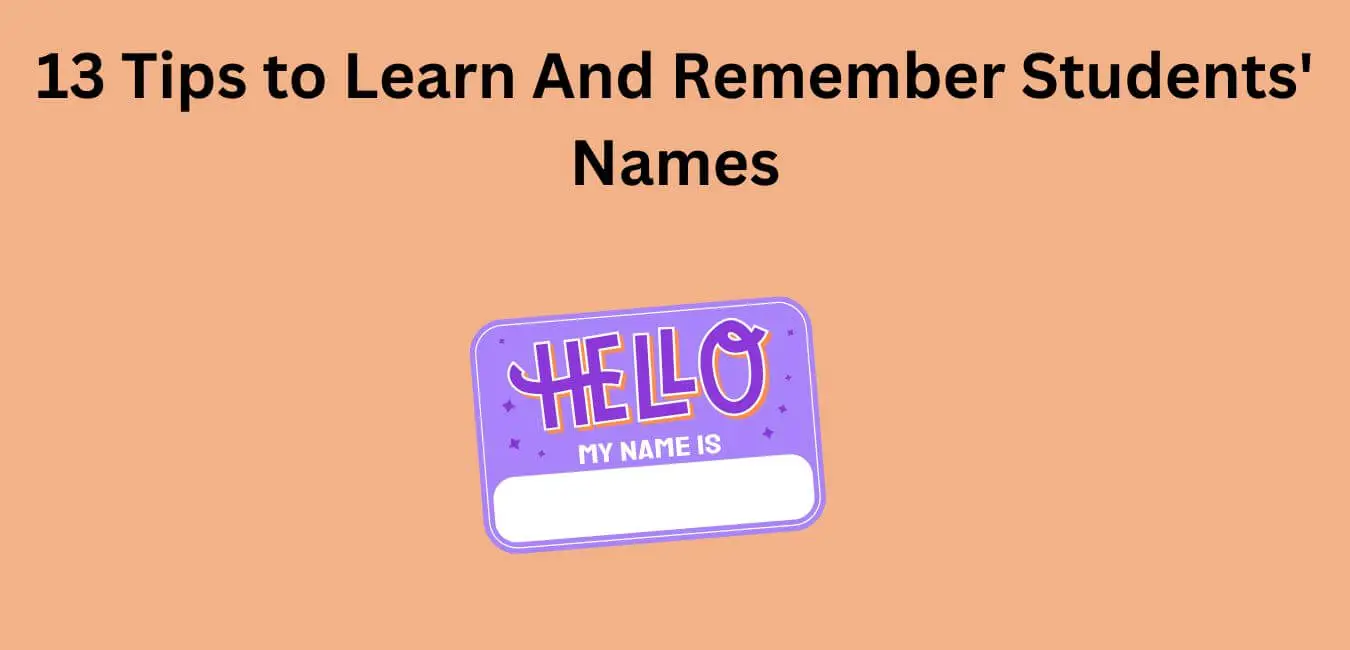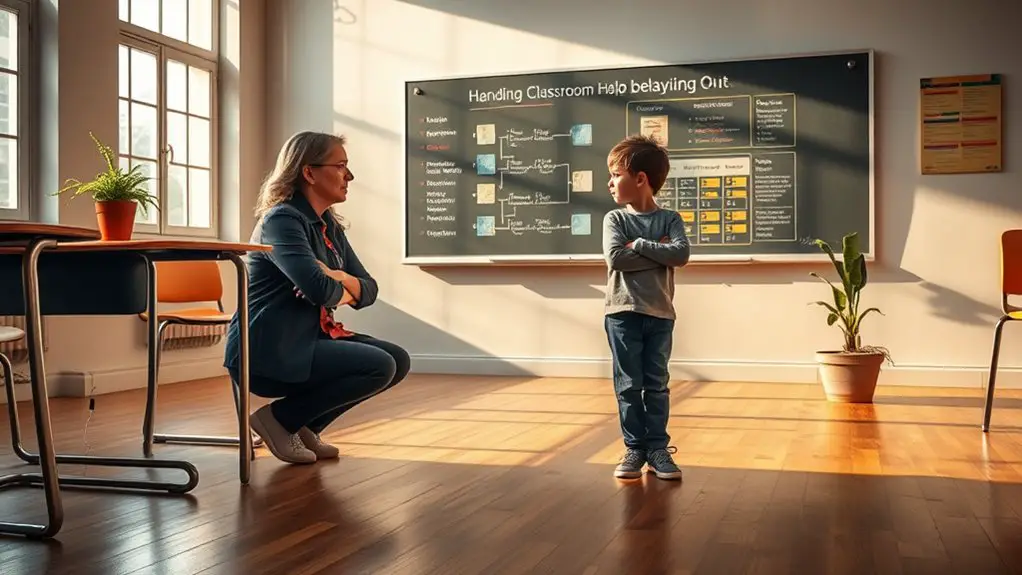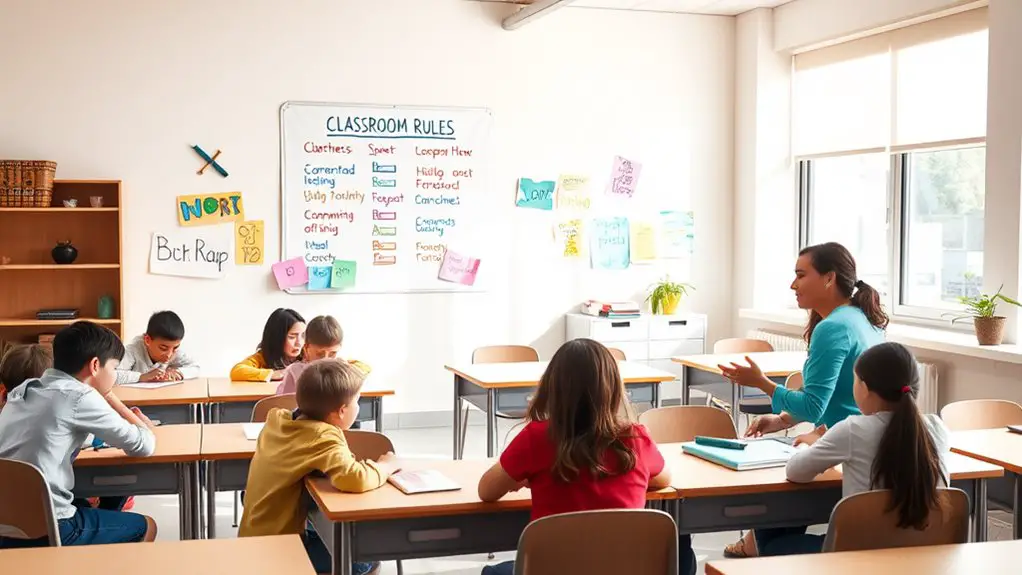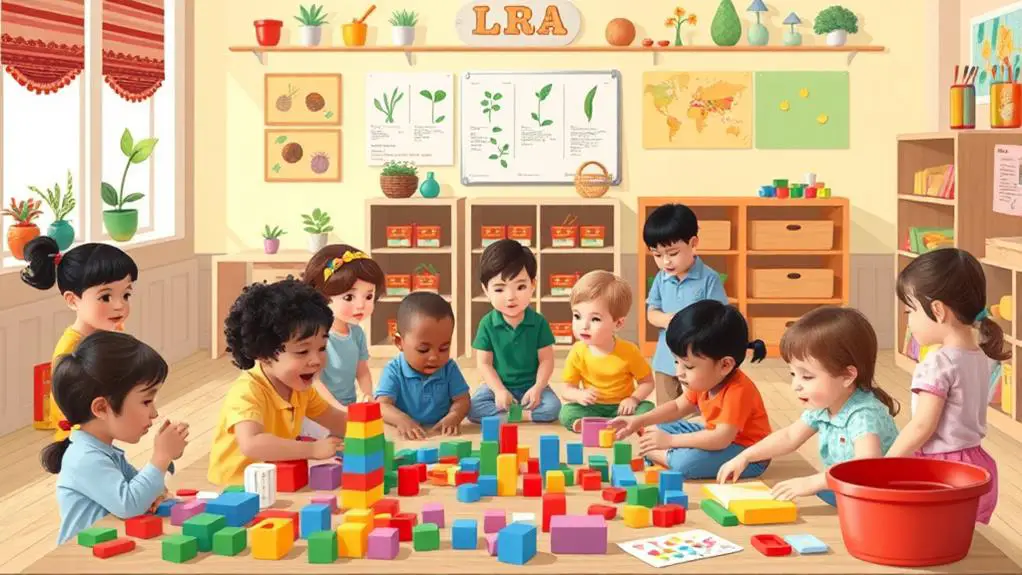Many educators fail to recognize the significant effect that boundaries can have on student engagement and behavior. Establishing clear expectations not only creates a positive learning environment but also encourages students to take responsibility for their actions. Involving students in this process is crucial; however, many educators find it challenging to initiate these discussions effectively. Through my experiences, I have learned valuable insights, particularly regarding the importance of recognizing individual needs and tailoring boundaries accordingly.
Creating a supportive atmosphere benefits both teachers and students. For instance, when students understand the rules and feel involved in shaping them, they are more likely to adhere to these guidelines. This participatory approach can lead to increased motivation and a sense of ownership over their learning environment.
Educators should consider regularly communicating with students about expectations and being open to their feedback. This dialogue not only strengthens the teacher-student relationship but also fosters a sense of community within the classroom.
Moreover, it is essential to be flexible with boundaries. Each student is unique, and what works for one may not work for another. For example, a student who struggles with anxiety might need more time to complete assignments or additional support during group activities. By recognizing these individual circumstances, teachers can adjust their boundaries to accommodate diverse needs, ultimately leading to better engagement and behavior across the board.
In summary, setting boundaries with students is a dynamic process that requires clear communication and adaptability. By fostering an inclusive environment where students feel valued and heard, educators can enhance the overall learning experience for everyone involved.
Understand Your Role
As an educator, I understand that my role encompasses much more than simply delivering lessons; it’s crucial to create a safe and respectful environment for my students. My perception of this role significantly affects my interactions with them, and recognizing this is vital for effective teaching.
I’ve observed that when students regard me as a supportive guide instead of merely an authority figure, it cultivates trust and openness within the classroom.
Establishing boundaries is a key aspect of this relationship. Boundaries aren’t merely rules; they’re essential frameworks that provide students with a sense of security. By defining clear boundaries, I demonstrate my commitment to their well-being, which enables them to concentrate on their learning.
Consistent communication of these boundaries ensures that students understand what to expect from me and each other.
Clarifying these boundaries also defines my role, helping students realize that while I’m here to support them, there are limits to our interactions. Striking a balance between support and structure fosters an environment where everyone feels respected and valued.
This nurturing atmosphere paves the way for meaningful educational experiences that contribute to their overall growth and development.
Establish Clear Expectations
Establishing clear expectations in the classroom is crucial for creating an effective learning environment. By setting specific guidelines, I enable my students to grasp what’s required of them, which ultimately enhances their chances of success. Consistent communication of these expectations is vital; it assures my students that they can depend on me and the structure I provide.
I also understand the importance of flexibility within boundaries. While I maintain rules, I’m willing to adjust them when the situation calls for it. For example, if a student comes to me with a particular challenge, I evaluate how we can adapt expectations without disrupting the overall classroom dynamic. This approach allows me to support student independence while preserving a respectful and harmonious atmosphere.
Trusting students to make choices within the framework of our established guidelines fosters a sense of autonomy. When students feel empowered to take charge of their learning, their engagement and motivation levels increase.
Communicate Openly
When it comes to establishing boundaries, open communication plays a crucial role. Encouraging honest conversations, utilizing straightforward language, and scheduling regular check-ins can greatly contribute to a nurturing environment.
These strategies can significantly enhance our interactions with students. For instance, when teachers and students engage in candid discussions about expectations and limits, it creates mutual understanding and respect.
This is essential for fostering a classroom atmosphere where students feel safe to express themselves and are more likely to succeed academically and socially.
Therefore, implementing these practices not only strengthens relationships but also promotes a positive learning experience.
Encourage Honest Dialogues
Open and honest dialogues are crucial for building a trusting environment with students. Actively encouraging student feedback not only allows for flexibility in boundaries but also strengthens the dynamics of relationships. When I invite students to share their thoughts, I’m not only listening; I’m demonstrating emotional intelligence. This approach fosters trust and enables students to express themselves openly.
To enhance these discussions, I employ collaborative strategies that promote peer support. I create situations where students can talk about their experiences and challenges together, which often leads to resolving conflicts effectively. Facilitating these conversations helps them appreciate diverse perspectives and learn from each other.
I also model effective communication and show how to tackle difficult topics. I focus on techniques that empower students, ensuring they feel confident in sharing their opinions. This practice enriches our classroom atmosphere and nurtures a culture where everyone feels valued and heard.
Ultimately, encouraging honest dialogues helps create a sense of community and motivates students to take control of their learning. Prioritizing these interactions establishes a foundation for a more supportive and engaged classroom.
Use Clear Language
Clear communication is crucial for setting boundaries with students. When I use simple and direct language, I help my students grasp what’s expected of them. Clearly stating my boundaries not only guides them but also promotes an atmosphere of respect and understanding.
I have found that using strategies to reinforce boundaries—such as consistent reminders and specific examples—strengthens these expectations. For example, instead of saying, “You need to focus,” I might instruct, “Please keep your eyes on your work during this time.” This straightforward approach minimizes confusion and encourages the desired behavior.
The importance of using simple language can’t be overstated. When I simplify my words, I make them understandable for all students, regardless of their backgrounds. This demonstrates that I care about their understanding and well-being. I strive to avoid jargon or complex phrases that may lead to misunderstandings.
In addition, using straightforward expressions helps build a more inclusive classroom environment. It allows every student to feel engaged and respected, which is vital for their learning experience. This method also sets a positive tone for communication, showing that clarity is a priority.
Establish Regular Check-ins
Establishing regular check-ins is vital for fostering a solid connection with my students and ensuring they comprehend the boundaries we’ve established. These interactions give me the opportunity to engage with them personally, emphasizing the significance of our guidelines. When I actively seek student feedback, I demonstrate my care for their experiences, while also making necessary adjustments that benefit the entire group.
During these check-ins, I promote open discussions about their feelings and the clarity of the boundaries. This two-way communication plays a crucial role in reinforcing those boundaries, as it helps me pinpoint areas where students may be struggling or feeling uncertain. By listening to their concerns attentively, I can tackle issues before they escalate into bigger problems.
I also prioritize recognizing achievements during these conversations. Acknowledging when students follow our boundaries contributes to a positive atmosphere and strengthens their importance.
Regular check-ins foster a supportive environment where students feel appreciated and understood, reminding everyone that boundaries serve as a framework for a respectful and effective learning experience.
Create a Safe Environment
Creating a safe environment in the classroom begins with setting clear expectations. When students understand what’s required of them, it promotes open communication and builds mutual respect. Establishing these guidelines helps to cultivate a space where every individual feels appreciated and heard.
For instance, initiating the school year with a discussion about classroom rules can engage students in the process. This not only empowers them but also instills a sense of ownership and accountability. When they contribute to the creation of these boundaries, they’re more likely to adhere to them.
Furthermore, regularly revisiting these expectations during the academic year serves to reinforce their importance. This practice can be as simple as dedicating a few minutes each week to reflect on behavior and communication, allowing students to express their thoughts and feelings. Such reflections can help maintain a consistent atmosphere of respect and support.
In addition to establishing rules, fostering relationships among students is essential. Incorporating team-building activities can help break down social barriers and encourage collaboration. When students feel connected to one another, they’re more likely to contribute positively to the classroom environment.
Ultimately, creating a safe classroom isn’t just about rules; it involves nurturing a culture of respect and understanding. By prioritizing these elements, we can ensure that every student feels secure and valued in their learning journey.
Establish Clear Expectations
Establishing clear expectations is crucial for creating a safe environment in the classroom. When students understand what’s expected of them, they feel secure and empowered. Setting these expectations from the outset establishes a positive tone for our interactions. This approach involves creating a framework that encourages student autonomy while maintaining necessary boundaries.
Involving students in this process is important. When they share their views on what constitutes a respectful classroom, it gives them a sense of ownership over their learning environment. This flexibility in boundaries allows us to adapt our expectations as needed, ensuring they feel relevant and achievable.
Moreover, revisiting these expectations throughout the school year is vital. This process isn’t a one-time discussion but rather an ongoing dialogue. When students observe my commitment to supporting them within these boundaries, they’re more likely to thrive. They begin to recognize that these guidelines aren’t merely rules; they’re essential for ensuring everyone feels safe and respected.
Ultimately, establishing clear expectations goes beyond discipline; it’s about fostering an environment where students can flourish and grow. This principle lies at the core of our educational mission.
Encourage Open Communication
After establishing clear expectations, I find that promoting open communication significantly enhances the classroom environment. When students feel secure in voicing their thoughts and emotions, it cultivates trust and transparency. I focus on establishing a space where they understand their contributions are valued.
Here are several methods I employ to foster open dialogue:
- Engage in active listening: I prioritize attentive listening when my students speak. When they recognize that I’m sincerely invested in their perspectives, they’re more inclined to share their ideas openly.
- Demonstrate emotional intelligence: I openly express my own feelings and reactions, illustrating to students that sharing emotions is acceptable. This practice aids in their development of emotional awareness and encourages them to communicate their own experiences.
- Schedule regular check-ins: I allocate time for individual conversations or small group discussions, providing students with the opportunity to express their thoughts in a more personal setting.
These strategies are essential for creating an inclusive classroom culture where every student feels heard and respected.
Foster Mutual Respect
In a vibrant classroom, mutual respect serves as the cornerstone of a safe environment where students feel empowered to learn and develop. When I prioritize respect, I cultivate a space where collaborative learning thrives, and every student’s voice is acknowledged. Recognizing and embracing cultural sensitivity is crucial, as it honors the diverse backgrounds that influence my students’ viewpoints.
To effectively nurture mutual respect, I focus on several key practices:
| Practice | Description |
|---|---|
| Set Clear Expectations | Clearly outline acceptable behaviors and their consequences. |
| Model Respect | Show respect in every interaction I have with students. |
| Encourage Peer Feedback | Provide chances for constructive dialogue among peers. |
| Celebrate Diversity | Recognize and celebrate various cultures within the classroom. |
| Reflect and Adapt | Regularly evaluate and enhance my teaching methods. |
Setting clear expectations is vital as it helps establish a common understanding of what respectful behavior looks like. For instance, I might implement a classroom agreement that outlines how students should communicate with one another, ensuring they understand the importance of listening and valuing differing opinions.
Modeling respect is equally important. I strive to demonstrate respectful behavior, whether I am addressing a student or facilitating group discussions. This consistent approach encourages students to mirror these behaviors in their interactions.
Encouraging peer feedback creates a culture of open communication where students feel safe to share their thoughts and feelings. I often organize small group discussions where students can offer constructive feedback to one another, fostering a sense of community and collaboration.
Celebrating diversity enriches the classroom experience. I incorporate activities that highlight various cultural traditions, such as international days or themed projects, which allow students to learn about and appreciate one another’s backgrounds.
Finally, reflecting and adapting my methods ensures that I remain responsive to the needs of my students. I regularly solicit feedback from them about what works and what doesn’t, allowing me to adjust my practices to better support their learning.
Through these practices, I aim to cultivate an environment where mutual respect is not just encouraged but becomes an integral part of the classroom culture.
Use Consistent Language
Using consistent language is vital when establishing boundaries with students. When I clearly communicate my expectations and maintain that clarity, it reinforces the boundaries I set. Consistency in language not only enhances understanding but also builds trust, allowing students to feel secure in their interactions with me.
Here are a few strategies I employ to uphold language consistency:
- Repeat key phrases: I consistently use the same terminology when discussing my boundaries, which aids students in remembering and grasping the concepts better.
- Be direct and clear: I steer clear of vague language, making sure that my messages are straightforward and easily understood without room for misinterpretation.
- Reinforce through practice: I frequently revisit our boundaries during discussions, emphasizing the importance of these expectations to help students internalize them.
These approaches create an environment where students feel comfortable and confident, knowing exactly what’s expected of them.
Model Respectful Behavior
Modeling respectful behavior is crucial in my interactions with students. Demonstrating active listening and practicing empathy on a daily basis fosters an environment where open communication can flourish.
When I show respect toward my students, it sets a standard for them to follow. This creates a culture of mutual respect, which is essential for effective learning and collaboration.
For instance, when a student expresses an opinion, I make it a point to listen attentively and respond thoughtfully. This not only validates their feelings but also encourages them to respect the viewpoints of their peers.
Additionally, I incorporate group activities that require teamwork and communication, allowing students to practice respectful interactions in a safe space.
Ultimately, the way I model respectful behavior has a profound impact on my students, helping them develop essential social skills that will benefit them in their future endeavors.
Demonstrate Active Listening
Active listening isn’t merely a skill; it’s a crucial element in nurturing respectful relationships with students. When I practice active listening, I foster an environment where students feel appreciated and understood. This method builds trust and promotes open lines of communication.
Here are several active listening techniques that I find effective:
- Maintain eye contact: This demonstrates that I’m fully engaged and present in the discussion.
- Use verbal affirmations: Words like “I understand” or “That sounds reasonable” communicate to students that their viewpoints are significant.
- Paraphrase what I’ve heard: This means restating their comments to show that I’m truly processing their emotions and ideas.
Utilizing reflective listening strategies aids me in clearing up any misunderstandings and enhances our conversations.
When I apply these techniques, I not only honor my students’ viewpoints but also model the kind of behavior I hope they’ll adopt. Demonstrating active listening lays a strong foundation for healthy boundaries, empowering students to share their thoughts without hesitation, knowing they’ll be treated with respect.
This mutual respect is essential for a conducive learning atmosphere.
Practice Empathy Daily
Empathy isn’t merely an occasional practice; it’s a daily commitment that fundamentally influences our interactions with students. Integrating empathy exercises into my routine enhances not only the emotional well-being of my students but also my own self-awareness. When I begin each day with the intent to better understand my students, I foster an atmosphere where they feel acknowledged and appreciated.
One practical exercise I’ve adopted is taking a brief moment before each class to think about the possible challenges my students may face. I remind myself that they come from varied backgrounds, each carrying their own unique struggles. This approach enables me to respond with kindness instead of irritation.
I also promote an environment where my colleagues feel comfortable sharing their own experiences and emotions. When we demonstrate respect and empathy among ourselves, it reinforces the significance of these qualities within our school community.
I observe the positive impact this has on students; they thrive when they recognize that we genuinely care about their well-being.
Incorporating these practices into our daily interactions not only strengthens our connections but also cultivates a supportive learning environment where everyone can flourish.
Encourage Open Communication
Open communication plays a vital role in creating a respectful classroom atmosphere where students feel secure in sharing their thoughts and feelings. Encouraging dialogue not only demonstrates respectful behavior but also allows for the reinforcement of boundaries within our interactions.
To foster this environment, I implement three primary strategies:
- Active Listening: I prioritize giving my full attention to my students when they express their thoughts and concerns. This approach validates their feelings and perspectives, making them feel acknowledged and appreciated in our discussions.
- Inviting Student Feedback: I create opportunities for my students to provide input regarding classroom dynamics and boundaries. This practice fosters a sense of belonging and ensures that their voices are integral to our community.
- Establishing Clear Expectations: I communicate my boundaries with clarity and consistency, helping students grasp the significance of mutual respect in our interactions. This clarity lays the groundwork for a supportive learning environment.
Set Time Limits
Establishing time limits is crucial for fostering a productive classroom atmosphere. When clear boundaries around time management are set, students tend to concentrate better and reduce digital distractions. This practice goes beyond simply keeping activities on schedule; it instills an appreciation for the importance of time.
Here’s a straightforward breakdown of how I arrange my time limits:
| Activity | Time Allowed | Purpose |
|---|---|---|
| Morning Routine | 15 minutes | Creates a positive start |
| Lesson Introduction | 10 minutes | Effectively engages students |
| Group Work | 20 minutes | Promotes teamwork and collaboration |
| Individual Tasks | 15 minutes | Encourages independent learning |
| Wrap-Up | 5 minutes | Reinforces essential concepts |
This structure helps to ensure that each segment of the lesson is purposeful and that students are aware of the expectations. By implementing these time limits, I have noticed a significant increase in student engagement and a decrease in distractions, leading to a more effective learning environment.
Recognize Individual Needs
After setting time limits, recognizing the unique needs of each student in the classroom becomes essential. Each learner brings distinct individual differences influenced by their social backgrounds, learning preferences, and personal experiences. To effectively support every student, I employ personalized strategies that enhance emotional awareness and cultural sensitivity.
One method I utilize is identifying behavioral triggers. Understanding what motivates or frustrates a student allows me to customize my engagement approach. For instance, if a student is particularly anxious during group activities, I might offer them a smaller, more intimate setting to build their confidence.
Another important strategy involves adapting to various learning styles. Some students may excel with visual aids like charts and videos, while others learn best through hands-on activities or verbal discussions. I strive to meet students at their level, ensuring that everyone has the opportunity to grasp the material effectively.
Furthermore, building support systems among students is crucial. I promote collaboration, encouraging them to work together and lean on each other for assistance. For example, pairing students with complementary strengths can lead to a more enriching learning experience for both.
These strategies not only cater to individual needs but also cultivate a supportive classroom environment where every student feels valued and understood.
Address Disruptions Promptly
Addressing disruptions promptly is crucial for fostering a productive learning atmosphere. When I observe distractions, I focus on intervention strategies that help redirect my students’ attention. It’s important not only to halt the disruption but also to steer them back toward their learning objectives.
Here’s my method for managing distractions:
| Disruption Type | Intervention Strategy |
|---|---|
| Talking during class | Provide a gentle reminder to refocus |
| Off-task behavior | Redirect their attention by asking a question |
| Technology misuse | Establish clear technology guidelines from the beginning |
| Emotional outbursts | Allow a moment for them to regroup in a quiet space |
This approach not only addresses the immediate issue but also contributes to a more engaged and focused classroom environment.
Reflect and Adjust Boundaries
Reflecting on my boundaries with students has been crucial for establishing a respectful and effective learning environment. Regularly examining my approach allows me to stay attuned to their needs and fosters an atmosphere of trust.
Here are some insights I’ve gained through this process:
Listening to student feedback reveals areas where boundaries may be too strict or too lenient. This feedback serves as a guide to fine-tune my methods, ensuring that students feel heard and understood.
Altering my communication style can strengthen boundaries while still encouraging openness and respect. Being mindful of how I express expectations helps create clarity, allowing students to engage more freely within those limits.
Recognizing shifts in classroom dynamics enables me to adapt my boundaries for improved engagement. This adaptability is key to maintaining a supportive environment where students can thrive.
Reinforcing boundaries isn’t solely about discipline; it’s about cultivating a safe space where students feel valued and respected.
Inviting feedback is a proactive approach that allows me to refine my boundaries to better support my students’ learning experiences. For example, if multiple students express a similar concern, it’s a signal for me to reassess my approach and consider necessary adjustments.
This reflection isn’t a one-time effort; it’s an ongoing commitment to improvement. I’m dedicated to creating a classroom where boundaries serve to empower students rather than restrict their growth.
Conclusion
In the educational landscape, establishing boundaries resembles constructing strong fences around fragile plants. These boundaries guide students’ development while still allowing them the freedom to grow. Each student is unique, much like different plants, requiring tailored approaches to boundaries that suit their individual needs. By nurturing this environment with care, clear communication, and mutual respect, I foster not just academic growth but also a supportive community where every student feels secure and appreciated. This collaborative effort enables us to reach our full potential together.

